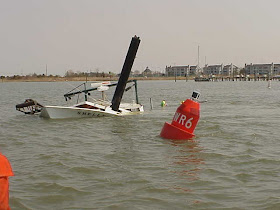Excerpt from U.S. Coast Guard Proceedings of the Marine
Safety & Security Council magazine by LCDR Ellis H. Moose, marine event
permit program manager, U.S. Coast Guard Office of Marine Transportation
Systems, Oceans and Transportation Policy Division.
The U.S. Coast Guard has been
safely and successfully administering the marine event permit program for
years, but the ambiguity of existing policy has made it difficult to provide a
consistent service-wide approach.
Currently, Coast Guard
district and sector commanders evaluate the need for an event permit by using
locally developed risk-based decision making and knowledge of their areas of
responsibility. While this practice has resulted in an impressive safety
record, it’s created inconsistencies in how the program is administered from
unit to unit and district to district.
The Review
The Office of Marine
Transportation Systems at Coast Guard headquarters owns the marine event
permitting process and is working with Training Center Petaluma, whose analysts
are developing a strategic needs assessment, a five-phase process that consists
of:
- performance analysis,
- root cause analysis,
- intervention selection,
- implementation,
- evaluation.
The project will certainly
include revisions to national policy but could also include job aids, detailed
work instructions, or training courses.
Seamless Service Delivery
Coast Guard units must
continue to execute the program using the risk-based approach that has served
so faithfully to date. Furthermore, it’s important to recognize that sector and
district commanders will always have wide latitude to exercise discretion in
the administration of the program regardless of the outcomes from this project.
No national policy will ever
substitute for considering the totality of the situation, the inherent risks
associated with gathering people and vessels on the water, and the local issues
unique to an area when exercising this authority.
It is the goal of this project to foster a policy that provides a consistent approach while continuing to provide effective control over marine events.
Coast Guard members navigate
their canoe during a race against the other four branches of the military at
the Walter MacFarlane Canoe Regatta in Waikiki. U.S. Coast Guard photo by Petty
Officer Michael De Nyse.
Full article is available at http://www.uscg.mil/proceedings/spring2011/.
Subscribe online at http://www.uscg.mil/proceedings/subscribe.asp.






